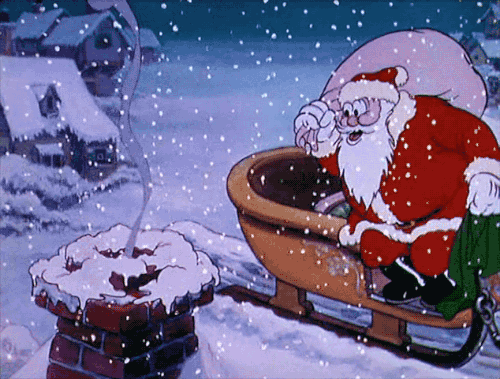
Of all the Christmas traditions this time of the year, Santa Claus is perhaps the most confounding, and definitely the rotundest. He’s a man wrapped in diverse rituals, and within a history as opaque as a cup of cocoa. Here's a look at the visual history of Santa Claus, tracing his history from early depictions of Father Christmas in England to early American illustrations before arriving at the big fat elf clad in red we know today. Let’s jump down the research rabbit hole -- er, chimney -- and get to the bottom of this. And no, Santa Claus wasn't invented by Coca-Cola.
The visual history of Santa Claus may begin in 17th century England where there was a cultural battle over Christmas. The Puritans, a protestant group who wanted to cleanse Christianity of its Catholic traditions, vehemently opposed the celebration of Christmas, a ceremony they found pagan and ungodly. As a response, English writers personified the holiday for the first time as Father Christmas and put the character into plays where ol’ Father Christmas had to defend himself in front of a court. No, really. The illustrators for these books decided to make him lithe and saintly, quite like depictions of St. Nicholas, although the holiday had not yet subsumed the saint into its own celebrations.
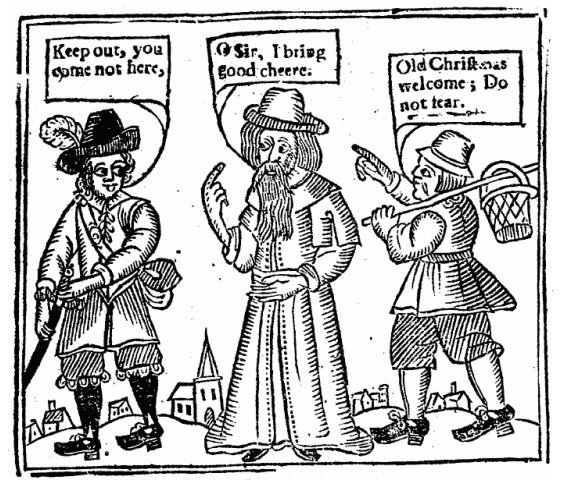
Father Christmas defending himself in Christmas, His Masque (he says ‘cheere’ instead of cheese, but still, who would turn down cheese?)
Christmas struggled in America, too, due to large populations of Puritan immigrants, essentially the bedrock of early America. In fact, Christmas wasn’t really widely celebrated until the end of the Civil War. But this didn’t deter writers working in New York, formerly known as New Amsterdam, a Dutch colony. This detail is important, because the first writer to establish Santa Claus used the history of Dutch folk culture to lend credence to his creation, Santa Claus.
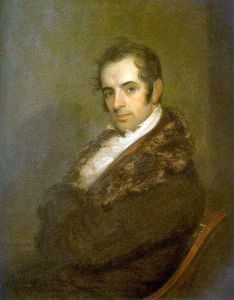
Yeah, that’s right, I invented Santa Claus
That’s Washington Irving who wrote Knickerbocker's History of New York, published in 1809. The book is a satirical history that almost single-handedly established Santa Claus as an American myth by presenting him as an already existing Dutch symbol (the book also sought to establish a mythic origin for the city of New York). Although there are no illustrations that accompany the book, it is rife with visual details that certainly influenced later artists: a mysterious man who uses a flying sleigh, smokes a pipe, and likes to place a finger beside his nose. These are all details that would be picked up by fellow New Yorker Clement Clarke Moore in his 1923 poem “A Visit from St. Nicholas,” more commonly known as “T’was the Night Before Christmas,” the poem that would codify the appearance of our modern Santa Claus.
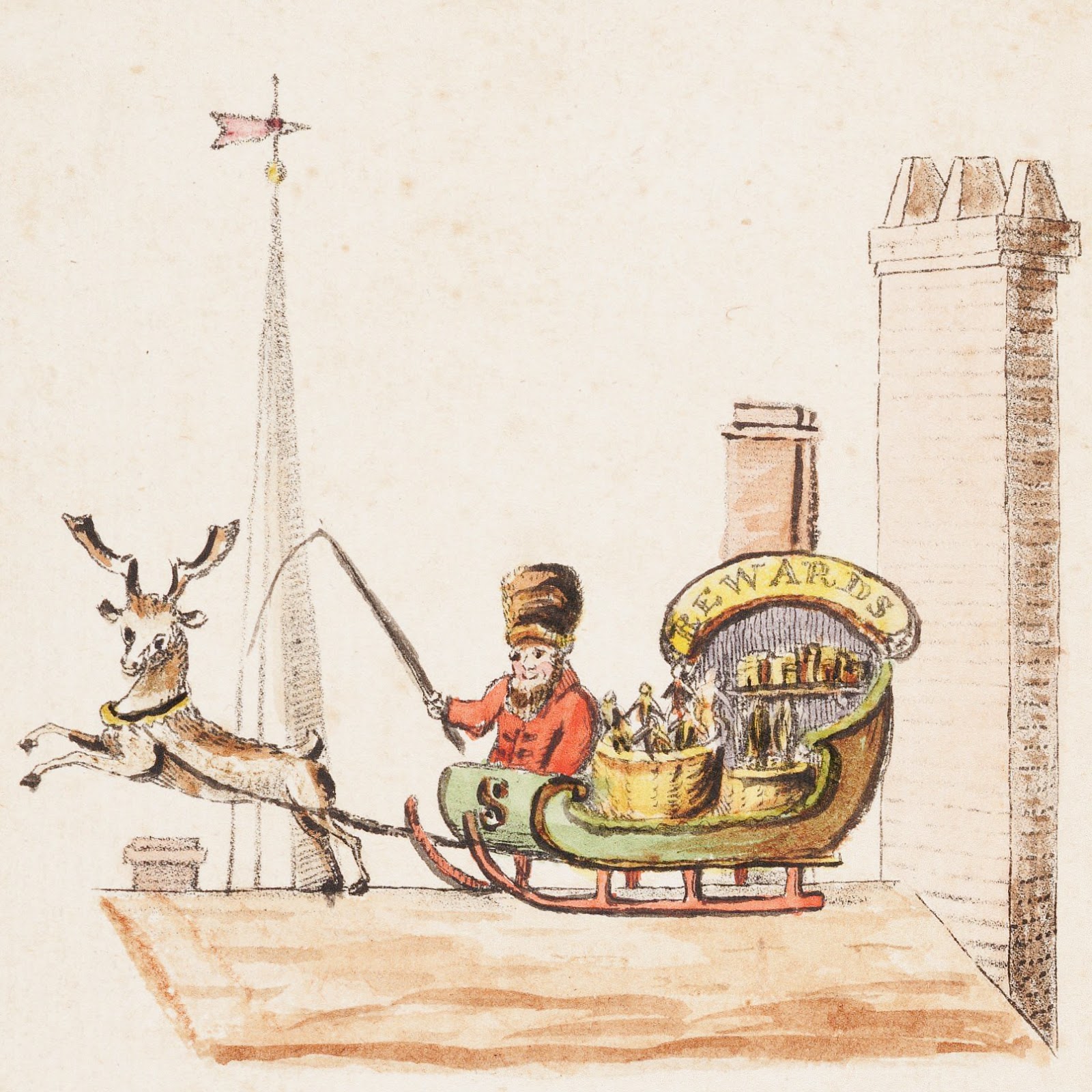
An illustration from an anonymous artist for a poem that predates “Night Before Christmas” and is the first known depiction of Santa Claus with reindeer and possibly the first with a red coat.
Let’s jump back over the pond to look at the illustrations for Charles Dickens’ A Christmas Carol from 1843. The representation of the Ghost of Christmas Present, done by John Leech, is quite curious. The figure, who is youthful and muscular, wears a robe that is surprisingly similar to the robe that our modern Santa Claus wears, even though it is green like holly. Due to the immense success of this story, it is not out of question that this drawing significantly impacted the imagination of artists who would go on to define Santa Claus.
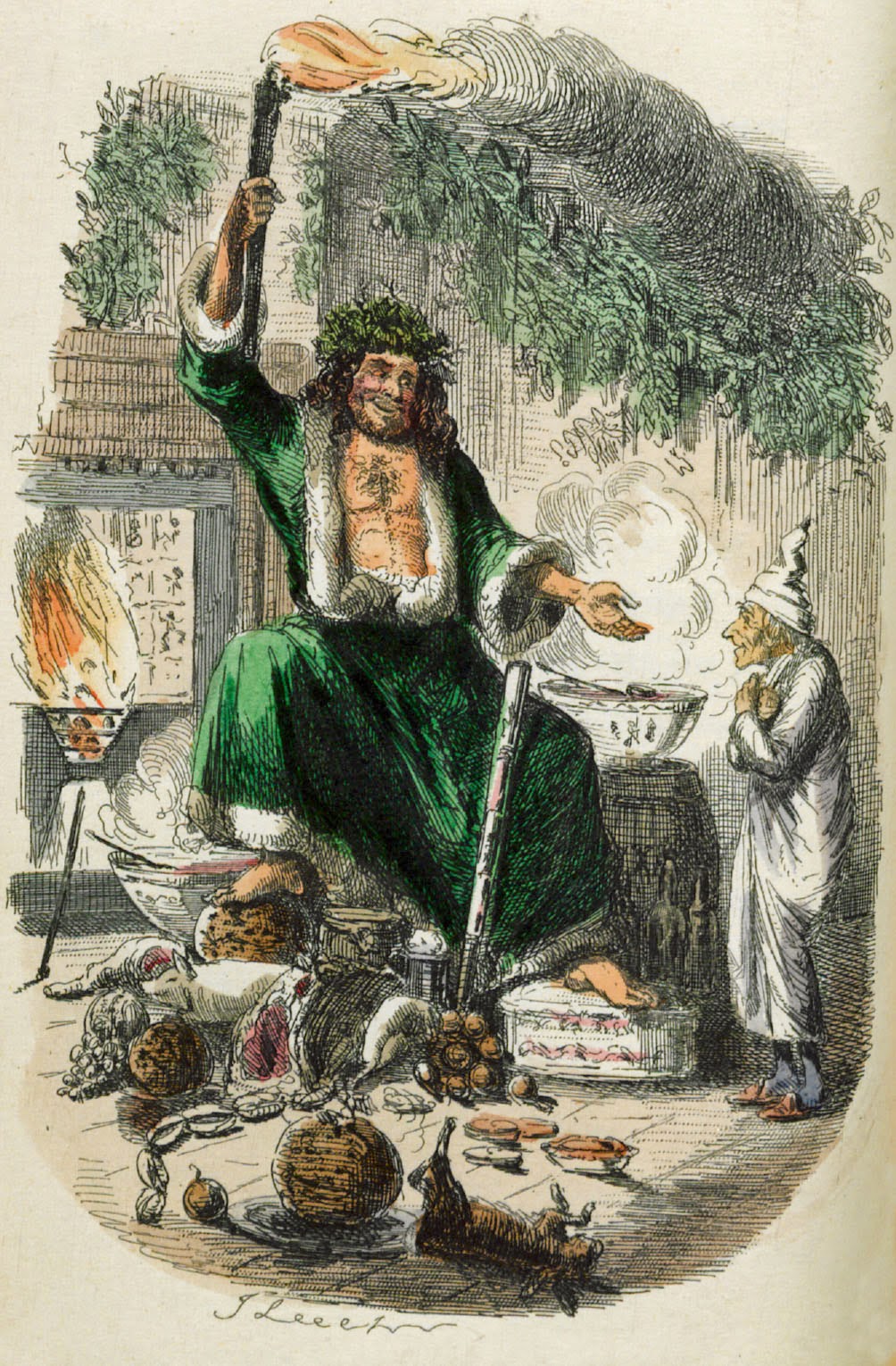
Hey Scrooge, check out my six pack!
Enter the father of the American cartoon, Thomas Nast. He is the first American artist, although German born, to really play with the representation of Santa Claus, and was heavily influenced by Moore’s poem. He was also likely influenced by winter Germanic traditions in his understanding of how the portly elf looked.
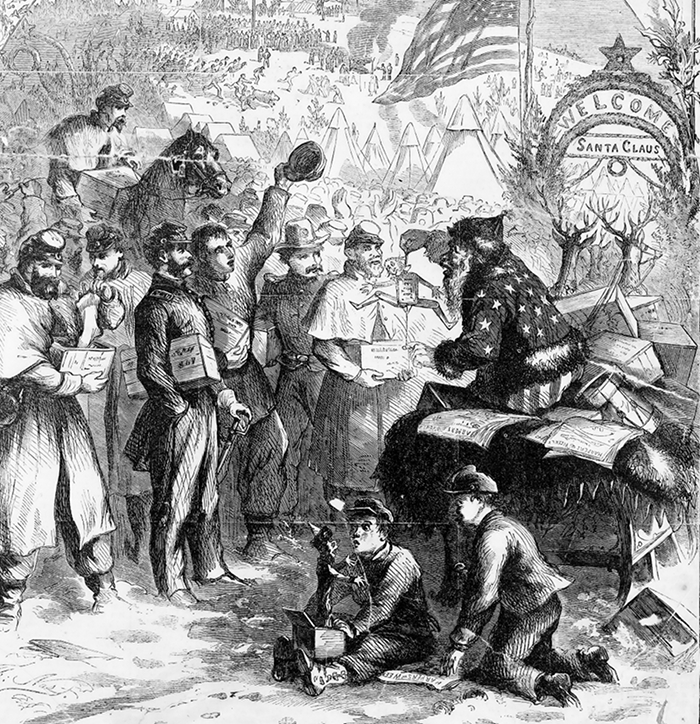
Populist Claus
This was his first attempt at Santa Claus, and it was decidedly political. Santa Claus arrives on a Christmas furlough rather than Christmas eve, and his coat is spangled with stars and stripes. It continues the tradition of the reindeer driven sleigh, and may be the first to show his sleigh overstuffed with toys. Twenty years later, in 1882, Nast would draw the first image to be considered a definitive portrait of Santa.
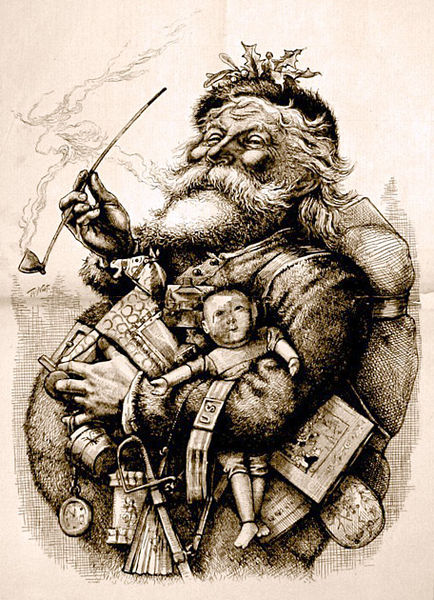
That’s the good stuff!
Here we can first see the visual tropes begin to emerge, especially against the image of St. Nicholas. Santa Claus is an outsized figure, and rather fat; he’s bearded, wears a thick fur suit, and carries toys for children. We might even see the influence of Leech with the placement of holly on top of the head and the thick fur coat.
Important to note, although toned down from his earlier drawing, Santa represents the American identity with an armband featuring a US flag design. Nast would also use Santa Claus in a few of his drawings concerning the Civil War, like the Christmas furlough drawing seen above. Placing him into political contexts is a trend that would continue into the new century, and one which furthered the ties between Santa Claus and a national identity. Yet, here it must also be noted that Santa Claus was already being picked up by other cultures, like in Britain where Father Christmas was being supplanted by Santa Claus before the arrival of the 20th century. In fact, the first Christmas movie, Santa Claus, was produced in Britain in 1898 (however, Santa Claus in the film looks like the old versions of Father Christmas).
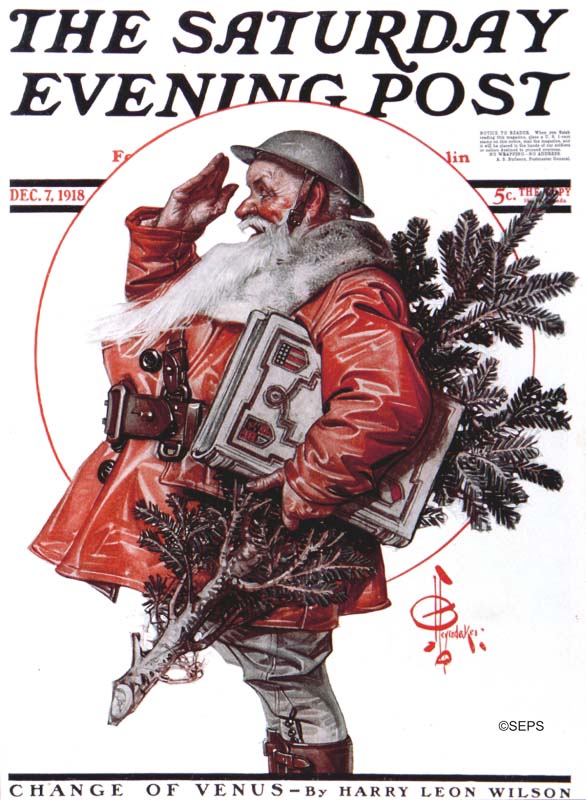
Let’s bring the heavy mistletoe, Sergeant! (1918)
This is a painting done by JC Leyendecker, who along with Norman Rockwell, defined the early modern representation of Santa Claus through their covers for the Saturday Evening Post. This painting is also significant in that it predates Coca-Cola’s use of Santa Claus as a marketing tool by at least two years.
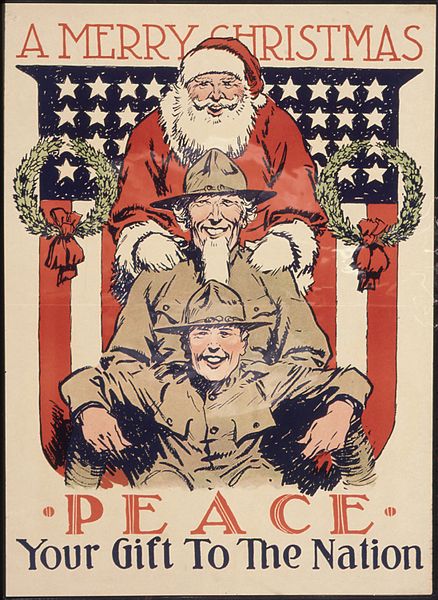
US Propaganda from 1918 -- is that Santa Claus and Uncle Sam?
That’s not to say that Coca-Cola did not have a role in shaping the portly gift-giver. Their first depictions actually took a lot of inspiration from Thomas Nast, and their later ads in the 30s, which are more distinctive and done by Haddon Sundblom, took inspiration from Moore’s "Night Before Christmas" poem. Sundblom used his friend, a retired salesman, as his model. His paintings were used by the company from 1931 to 1964, and funnily enough, are all kept in the company’s archives and occasionally make rounds to museums like the Louvre.

Coca-Cola Claus
This image also establishes Santa Claus as a secular hero, something that was always there, but wasn’t exactly crystal clear. It also furthers Santa Claus’s connections to commercialism and capitalism, something that we may overemphasize today without considering his literary and visual history.
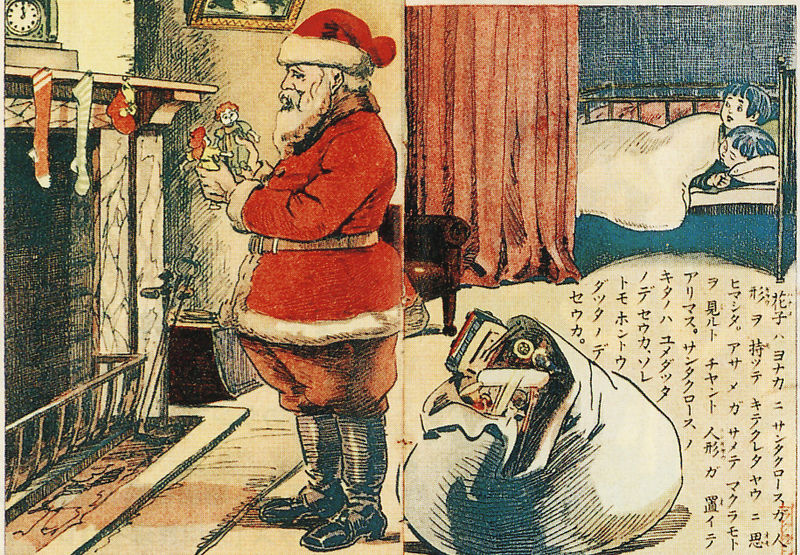
This Japanese artist’s interpretation of Santa Claus from 1914 gives further credence to the idea that Coca-Cola had little involvement with the visual development of Santa Claus
Let’s talk about that literary history. So we know that Washington Irving planted the seed and Moore established the image of Santa Claus while artists like Nast and Rockwell pushed the iconography from those textual influences. All of this does not explain the precedent for Irving’s creation. Some scholars have suggested that the visual history that influenced Santa Claus might stem from Siberian Shamans, and others theorize that Santa Claus is a permutation of Yule, another name for Odin. Even others say that he is a corruption of St. Nicholas.
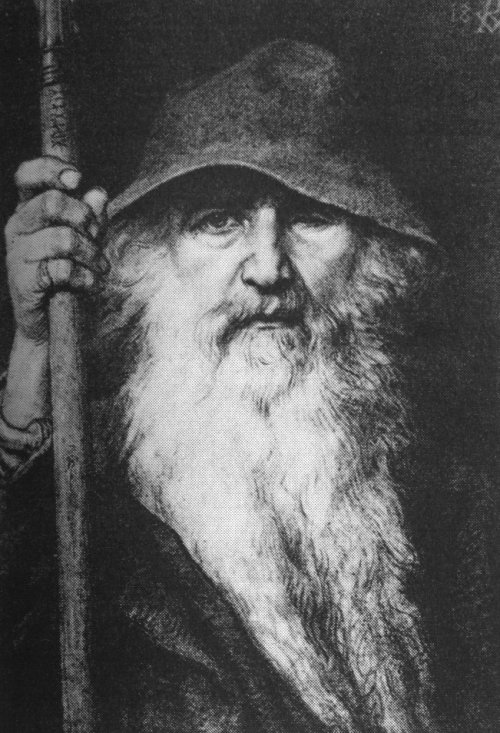
Odin by Georg Van Rosen (1883)
The god was an ornament (of sorts) for the world tree instead of the Christmas tree
What is clear, however, is that the Santa that we know today is the result of a pluralist American imagination (pluralist insofar as Dutch, German, English and other settlers combined their cultural histories into a new figure). He also presents a compelling narrative to the art historian in that his visual development is built upon literary references that jump back and forth around the Atlantic, and, perhaps, the globe. As we’ve seen, it is not the easiest story to put together. Still, the figure of Santa Claus has become such an established icon, that he has become a tool of appropriation by modern artists like Paul Mccarthy. What we are left with is that Santa Claus is an American tradition, an American myth.
Know of a moment in Santa Claus’s visual history that we missed? Let us know in the comments below.
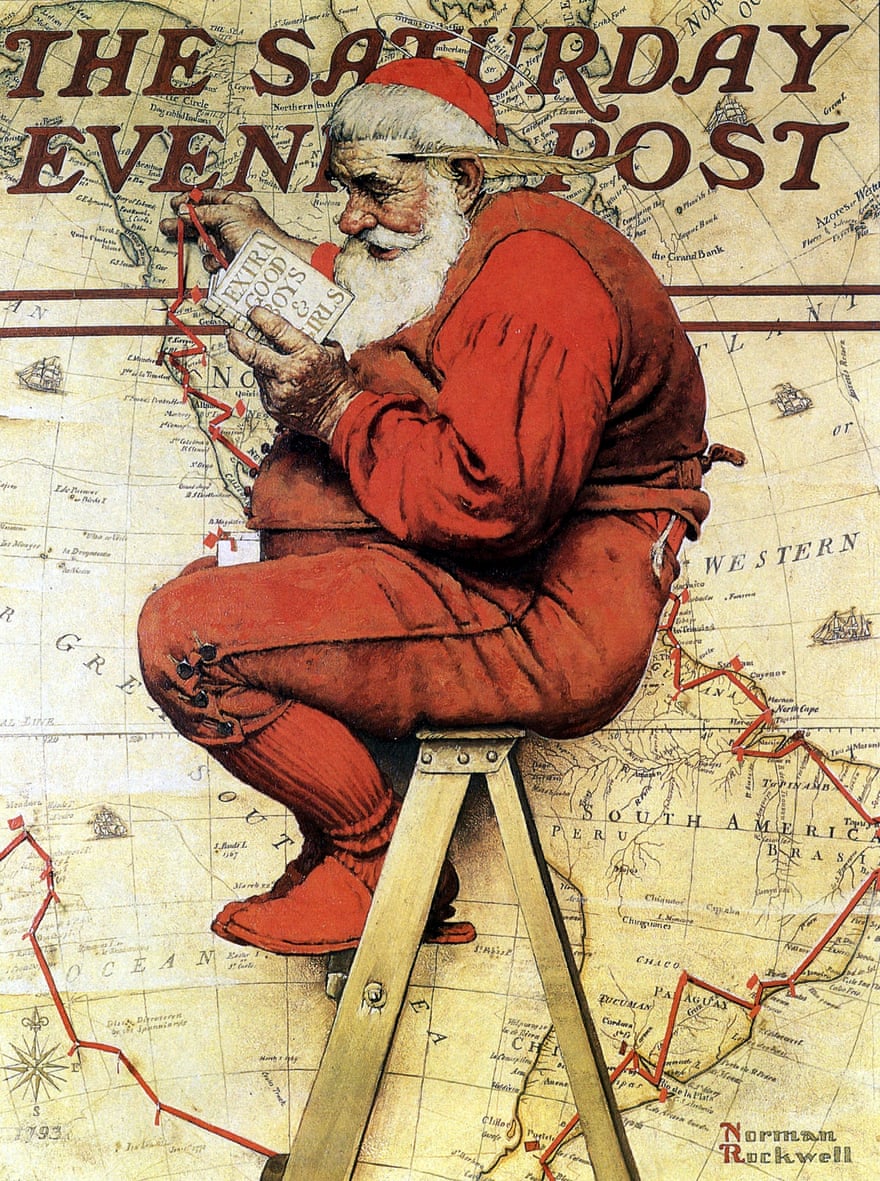
The Sartle team looking out for all of your lovely comments
Sources
- Restad, Penne L. Christmas in America a History. New York: Oxford Univ. Press, 1996.
- "The True History of the Modern Day Santa Claus." The Coca-Cola Company. January 01, 2012. Accessed December 2018. https://www.coca-colacompany.com/stories/coke-lore-santa-claus.
- Hutton, Ronald. Stations of the Sun: A History of the Ritual Year in Britain. Oxford: OUP Oxford, 2001.
- "Santa Claus Was Made by Washington Irving." Historical Digression. October 04, 2016. Accessed December 2018. https://historicaldigression.com/2014/12/06/santa-claus-was-made-by-was….
- Kennedy, Robert C. "Santa Claus and His Works." The New York Times. Accessed December 2018. https://archive.nytimes.com/www.nytimes.com/learning/general/onthisday/….
- "America and the Creation of Santa Claus: A Guide." Myrddin/Merlin. Accessed December 2018. http://www.arthuriana.co.uk/xmas/pages/santa.htm.
- "The English Father Christmas: A Separate Origin." Myrddin/Merlin. Accessed December 2018. http://www.arthuriana.co.uk/xmas/pages/english.htm.
Comments (3)

The image of Santa Claus as a plump, jolly man in a red suit dates back to the 19th century. However, the history of Santa Claus goes back much further. The roots of Santa Claus can be traced to a 4th-century Christian saint named Saint Nicholas.

The headgear of the modern (post 1900) Santa Claus is so similar to the headgear of he Scandinavian "nisse" or "tomte" that a borrowing from that very popular Christmas figure cannot be ruled out. The tomte became a standard Christmas symbol in competition with the Christmas Man, in essence the German equivalent of Santa Claus..










Santa did not exist in my country.